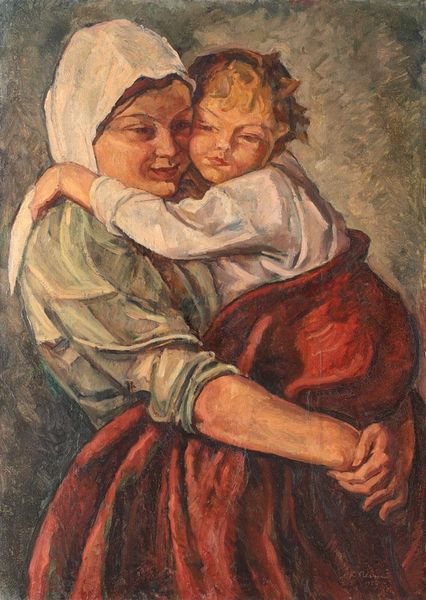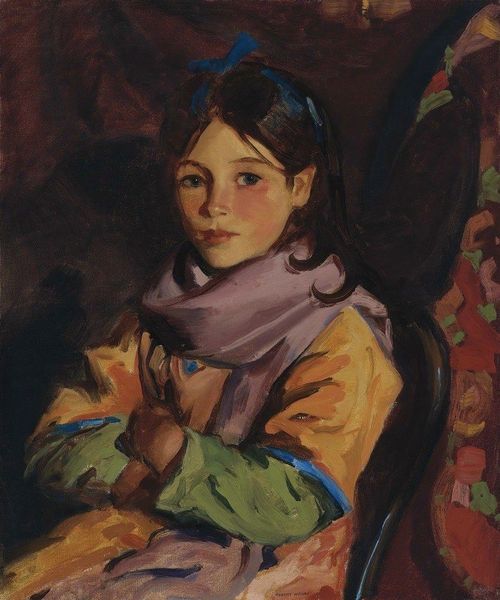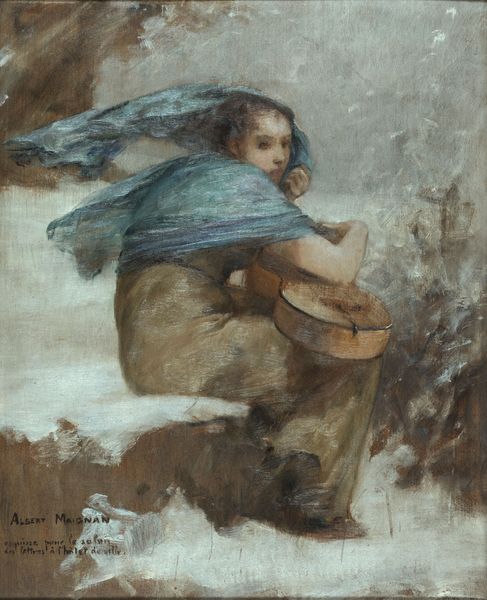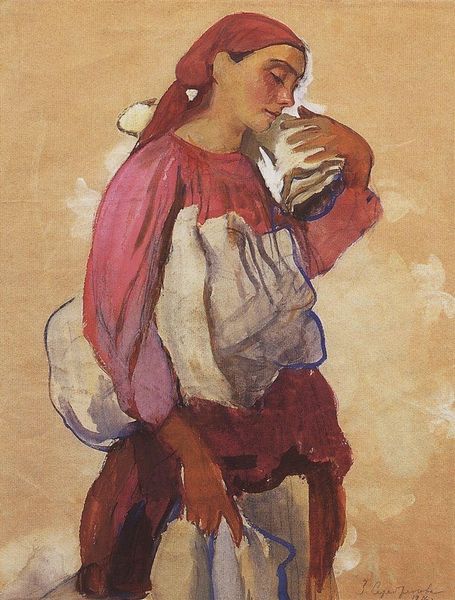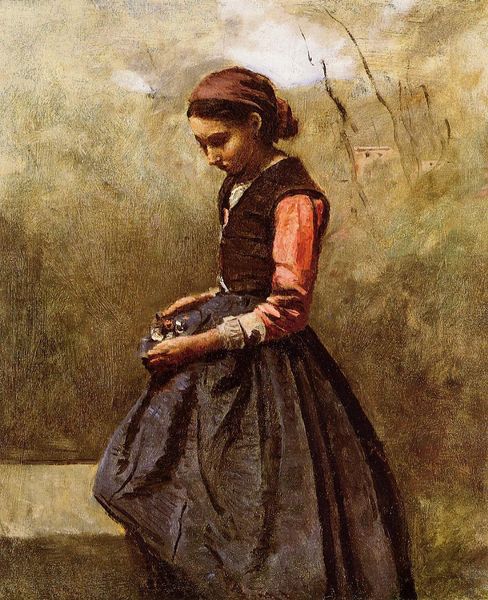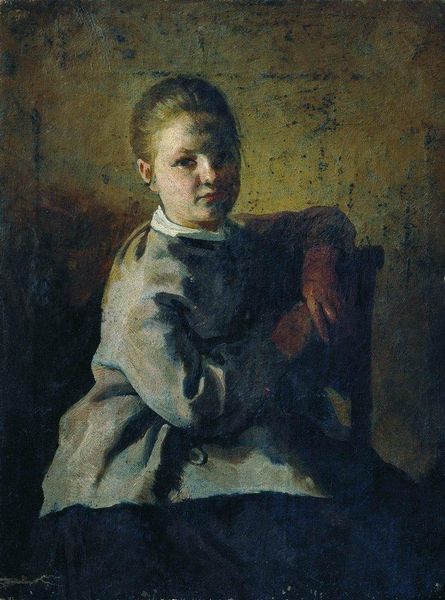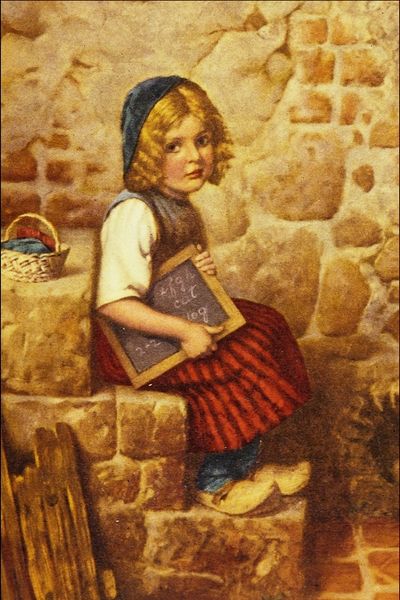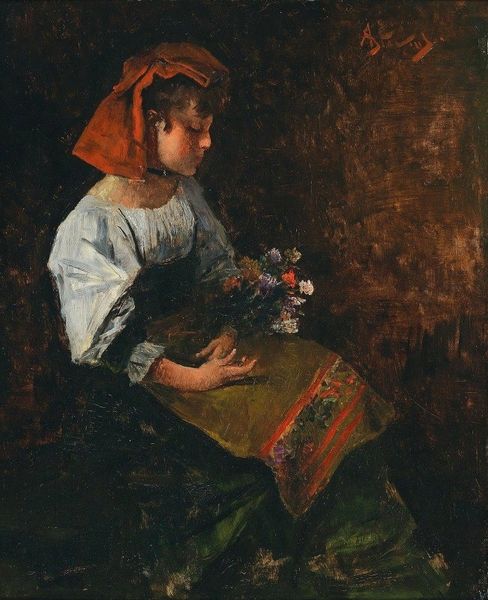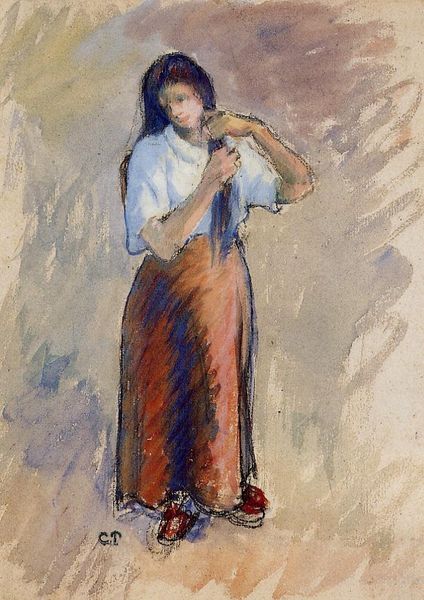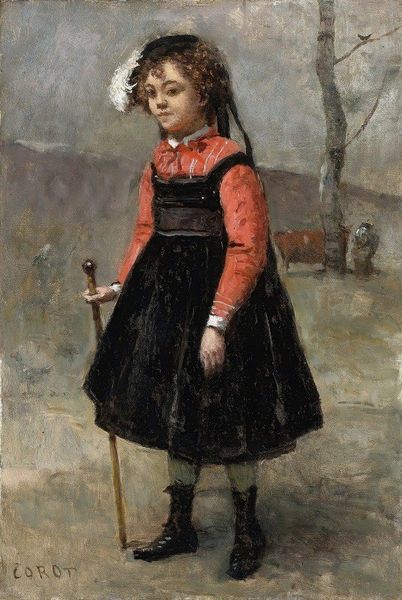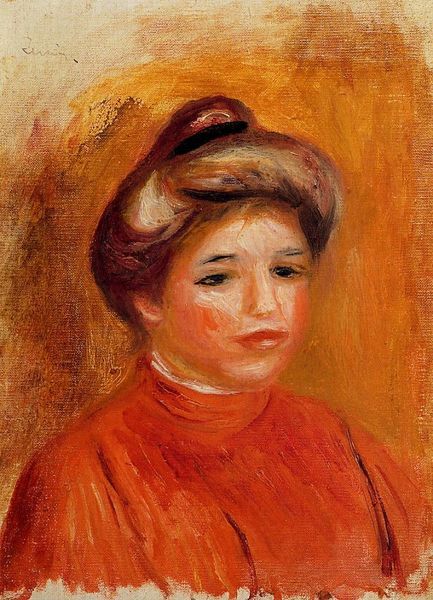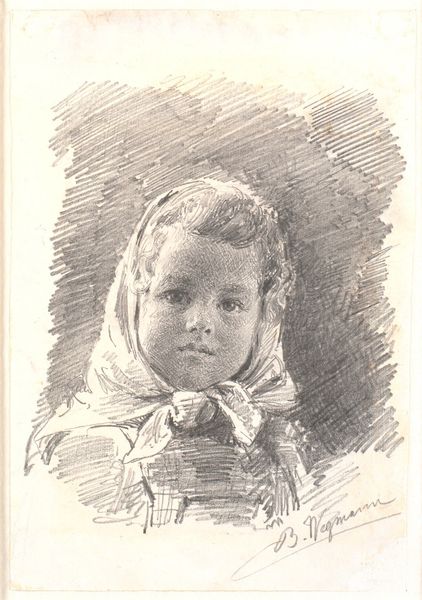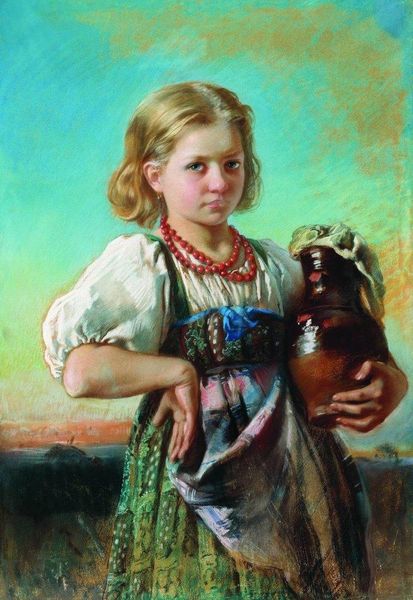
painting, oil-paint
#
portrait
#
painting
#
oil-paint
#
oil painting
#
genre-painting
#
realism
Copyright: Camil Ressu,Fair Use
Curator: The sheer heft of that jar… there’s something deeply affecting in how she holds it. Almost reverently, don’t you think? Editor: Absolutely. I find the subject's bare feet especially grounding. It seems an intimate glimpse into a life and labour perhaps unacknowledged. Let me give you some more context. What we have here is Camil Ressu’s “Borcanul cu smântână (Smaranda),” which translates to "The Jar with Cream (Smaranda)". Though the date of this oil painting remains unknown, Ressu painted it during his realist period. Curator: "Smaranda," she likely represents the timeless image of childhood intertwined with everyday burdens, presented through an utterly human form. The way her dress nearly blends into the earthy palette connects her to the soil, reinforcing themes of labour, the role of children, and class. I see echoes of Millet here, wouldn't you say? Editor: Indeed. Ressu was quite interested in depicting rural realities. But I find myself wondering about the original social function of works like this, meant for display. Do you believe these were intended as sentimental tributes to working-class life or as observations by a privileged class removed from the scene? Curator: That’s where things get interesting. The very act of painting such a subject, lifting it into the realm of high art, grants it a new significance. I see echoes of folkloric traditions. Smaranda embodies cultural memory—a symbolic carrier, not just of cream, but of tradition and endurance, visually memorialized. Editor: True. Art like this helped to create a national identity. How do you think Ressu's background as a teacher may have impacted his subject matter? He likely saw the lives of many young Romanians daily. Curator: Perhaps it instilled in him a keen eye for both the struggles and quiet dignities present within those he portrayed. Seeing her steady gaze, I sense deep currents flowing beneath the surface of daily life. The cream isn't just sustenance, it is potential - it's life in its potential state, held carefully. Editor: That brings forth a potent interpretation. And considering Ressu’s place within a socio-political framework that favored realism as a reflection of collective Romanian identity, this becomes quite politically charged. Curator: Agreed. Thank you. Considering this image as both history and metaphor reveals an even deeper humanity. Editor: Absolutely. This has given me a renewed appreciation for the narratives art carries, both painted on the canvas and ingrained within its historical reception.
Comments
No comments
Be the first to comment and join the conversation on the ultimate creative platform.
